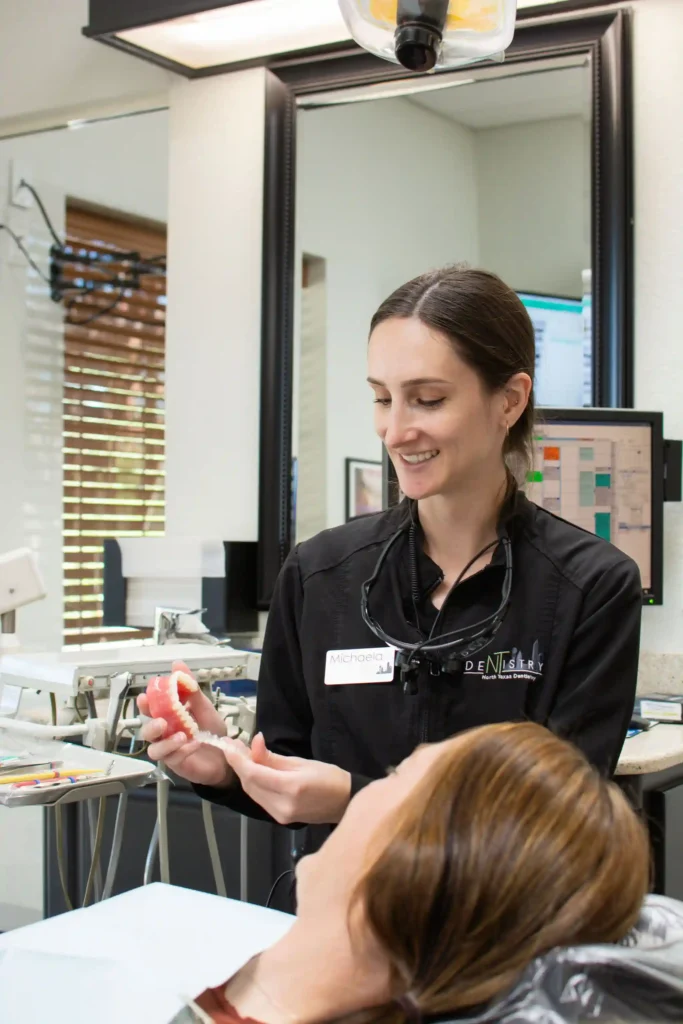
Dental onlays are custom-made restorations designed to repair large cavities or damaged areas of a tooth. Unlike crowns, which cover the entire tooth, onlays target specific areas, such as the cusps and biting surfaces, preserving as much of the natural tooth structure as possible.
Made from durable materials like porcelain, composite resin, or gold, onlays blend seamlessly with your teeth, providing strength and a natural appearance. They’re ideal for addressing issues that are too severe for traditional fillings but don’t require a full crown.
Several factors can lead to the need for onlay procedures, including:
Many patients are surprised at the large amount of surface area that we examine during an oral exam. At every hygiene visit, we examine all the tissues of your mouth, including gums, cheeks, lips, tongue, and jaw.
It is just as important to have regular soft tissue screenings as it is to have a professional dental cleaning.
Oral cancer can afflict anyone, although tobacco users put themselves at a significantly higher risk than non-users. Chewing tobacco has up to 3000 different chemicals, including the same compounds used in pesticides and embalming fluid.
Cellular changes below the surface aren’t always detectable until they’ve advanced to a critical stage.Early detection and treatment of oral cancer can significantly increase your chances of a quick and complete recovery. The American Cancer Society reports that about 7,000 deaths result from oral cancer out of 30,000 cases diagnosed annually.
Oral cancer often develops silently, presenting no apparent symptoms in its early stages. Our dentists at North Texas Family and Cosmetic Dentistry utilize oral cancer awareness tactics so that even regular screenings allow abnormalities to be detected early, improving treatment outcomes and significantly reducing risks.
The onlay restoration procedure involves two main appointments:
This minimally invasive approach preserves your tooth’s health and structure while restoring its function and appearance.
At North Texas Family and Cosmetic Dentistry, we take pride in delivering affordable onlays without compromising quality. Here’s why we stand out:
Don’t let tooth damage hold you back. Experience the benefits of onlay restoration and regain your confidence.
One of the biggest advantages of an onlay procedure is its conservative nature. Unlike dental crowns, which require more extensive tooth preparation, onlays involve minimal removal of healthy tooth structure. Only the decayed or damaged portions of the tooth are eliminated, leaving the surrounding healthy enamel intact. This ensures the preservation of as much of your natural tooth as possible while providing a strong and functional restoration.
Onlays are often considered a middle ground between fillings and crowns. They are ideal for situations where a filling is insufficient due to the size of the cavity or damage, but a full crown may not be necessary. Onlays preserve more of the natural tooth structure compared to crowns and are more durable and precise than large fillings. Your dentist will evaluate your specific dental condition and recommend the most suitable option based on your needs.
The onlay procedure is typically not painful, as the dentist will numb the area using a local anesthetic to ensure your comfort throughout the process. Most patients report little to no discomfort during the treatment. After the procedure, you may experience minor sensitivity in the treated tooth, which usually subsides within a few days. If you have dental anxiety, your dentist may also offer additional options, such as sedation, to make the experience more comfortable.
Monday: 7:30am – 4:00pm
Tuesday: 7:30am – 4:00pm
Wednesday: 7:30am – 4:00pm
Thursday: 7:30am – 4:00pm
Friday: Closed